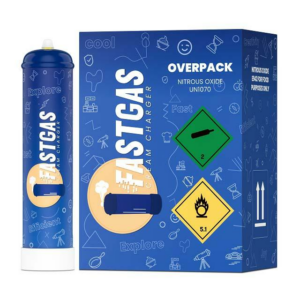DIY Gas Cylinder Projects: Upcycling Ideas for Creative Home Use
FastGas Blog
DIY gas cylinder projects have gained popularity among enthusiasts looking to give these robust containers a new lease of life. Rather than discarding them, you’ll find that gas cylinders can be transformed into many useful and creative items. The key to beginning such projects is ensuring your safety by decommissioning the cylinder properly, ensuring it’s free from any residual gases and safe to handle.
Once you have prepared your cylinder, there are numerous possibilities for what you can create. From outdoor heating elements like wood burners and rocket stoves to garden fixtures such as modern metal planters and unique “temple bells”, every cylinder presents an opportunity for creativity. The process typically involves cutting, welding, and metalworking techniques. While these projects can vary in complexity, they all share the rewarding experience of creating something new and functional from an item that might otherwise be considered waste.
Key Takeaways
- Gas cylinders such as FastGas products can be creatively repurposed into useful DIY projects.
- Safe preparation of the cylinders is an essential first step before starting your project.
- Projects can vary in complexity and may involve diverse skills like metal cutting and welding.
Preparing for Your DIY Gas Cylinder Projects
Before embarking on any DIY project involving gas cylinders, you must understand the importance of safety and proper planning. Ensure you have the suitable materials and tools, and prepare a detailed design of the project you intend to undertake.
Safety and Materials
Your safety is paramount when working with gas cylinders. Ensure the cylinder is empty and free from any residual gases. Valves should be removed entirely, and the cylinder should be cleaned of oil or flammable substances. Always work in a well-ventilated area while wearing protective gear such as gloves, safety glasses, and welding helmets when necessary. The materials you select, like a specific type of rod for reinforcement or connectors like washers, should be compatible with your design and robust enough to handle the stress they’ll endure during the project’s lifespan.
Tools and Equipment Needed
Gather all the essential tools before you begin. You will need a saw to cut metal for parts such as doors, a hammer for fabrication work, an angle grinder for cutting and shaping the cylinder, and equipment for securely welding components. Furthermore, ensure all tools are in good working condition, and you’re well-versed in their use. Here’s a list of essential tools you might require for your project:
- Saw
- Hammer
- Angle Grinder
- Welding apparatus
- Protective Gear (gloves, safety glasses, welding helmet)
Project Planning and Design
Planning is crucial to the success of your project. Begin by sketching a detailed design, including dimensions and the placement of components such as the cylinder valve and door. This plan will also guide your work and help ensure the final product meets your needs. Consider the project’s purpose – whether it’s a trolley for easy cylinder transportation or a rocket stove for outdoor cooking. Calculate the amount and types of materials you’ll need, and plan each stage of the build process meticulously. To streamline the assembly phase, perform the necessary prep work on your materials, such as cleaning and cutting.
Remember, follow these guidelines closely to achieve success in your DIY gas cylinder project and maintain safety throughout the entire process.
Embarking on DIY gas cylinder projects can be rewarding, allowing you to repurpose materials and create functional items for your home or workshop. This section will guide you through several project ideas, ensuring you work safely and efficiently while handling tools and materials such as valves, gas pipes, and welding equipment.
Creating a Gas Cylinder Door
To create a door from an old gas cylinder, you’ll need to start by removing the valve using the appropriate tools to avoid risks of residual gas. You will then section the cylinder carefully with a saw or an angle grinder. Cut a straight line down one side, hinging on the opposite side to create the door mechanism. Ensure the edges are smoothed with the grinder to avoid any sharp points. Welding hinges can be done with a welding rod; attaching washers will reinforce the structure. Once constructed, treat the door with oil or a protective stain to prevent rust and enhance its aesthetic.
Constructing a Cylinder Stand
For a cylinder stand, begin by cutting the base of a gas cylinder using a saw or angle grinder, ensuring stability in the final product. Depending on your preference and the intended balance, you can attach legs by welding rods at the bottom, creating a tripod or four-legged stand. Add washers for additional strength at joints and points of heavy stress. Finish by applying a protective coating or paint to the stand to safeguard against weathering and to give a polished look.
Gas Cylinder Lighting Fixture
Turning a gas cylinder into a lighting fixture is an inventive way to illuminate your space. Start by removing the valve and clearing out the gas pipe to ensure the cylinder is safe to handle. Proceed by cutting designs into the body of the cylinder with an angle grinder, which will allow light to escape artistically. Inside, install the lighting mechanism—but keep in mind this should be done in compliance with electrical safety standards. Maintain a safe distance from any flammable material, and consider treating the metal for heat resistance and visual appeal.
Maintenance and Upkeep
Regular maintenance is crucial for your gas cylinder DIY projects. Checking weld points periodically for signs of wear or strain and addressing them promptly with a welding tool, if necessary, will prolong the life of your creations. For doors and stands, check for loose washers and tighten them. Also, drain any accumulated moisture to prevent rust and apply oil or stain as needed to protect against the elements. Tracking the integrity of your constructions will ensure they remain safe and functional.
Frequently Asked Questions
Crafting DIY projects with old gas cylinders can be rewarding and environmentally friendly. Below are some specific questions and answers to guide you through various creative initiatives, ensuring safety and innovation at every step.
How can I safely repurpose an old gas cylinder into garden art?
Before you start, it’s crucial to ensure the gas cylinder is empty and properly cleaned to remove any hazardous residues. Create garden art by painting the cylinder with weather-resistant paint and repurposing it as a planter or by fashioning it into a whimsical garden creature with welded-on metal pieces for features.
What are some innovative ideas for upcycling used gas bottles?
Used gas bottles can transform into stunning pieces of decor. Also, polish the exterior for a modern look, turn it into a base for a glass-top table, cut it horizontally and plant a miniature garden inside. A used gas bottle can become a standout feature with creative cuts and additions.
Are any particular precautions needed when transforming a gas cylinder for furniture use?
Yes, the main precaution is to thoroughly vent and neutralise the cylinder to prevent any explosion risk. After ensuring it’s safe to work with, stabilise the cylinder for furniture use by adding a solid base and protective coatings to prevent rust when repurposing it into stools or tables.
Can out-of-date gas cylinders be converted into outdoor heaters, and how?
Converting an out-of-date gas cylinder into an outdoor heater should be done cautiously. First, ensure the cylinder is no longer pressurised and clean it thoroughly. After making modifications for ventilation and installing a burner kit, your new outdoor heater should be checked for safety by a professional.
What creative steps are involved in turning an empty gas cylinder into a BBQ grill?
To turn an empty gas cylinder into a BBQ grill, cut the cylinder safely to create a lid and body. You’ll need to attach hinges, a handle, and grill racks. Also, apply high-heat-resistant paint to the exterior to withstand the temperature and add legs for stability.
How can I utilise a gas cylinder to craft a unique lighting feature?
You can create a bespoke lamp by cutting the gas cylinder into your desired shape and sanding down any rough edges. Install a light-fitting kit inside, use durable, heat-resistant paints, or add metal accents for a chic industrial effect. Also, always seek advice from a qualified electrician for the electrical components to ensure safety.







